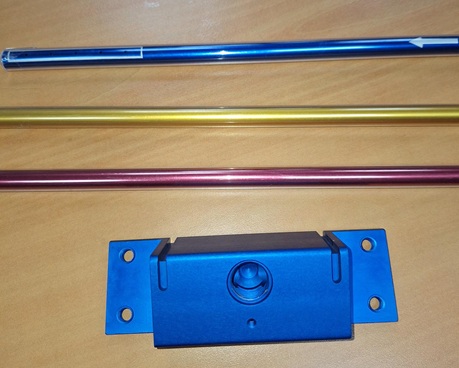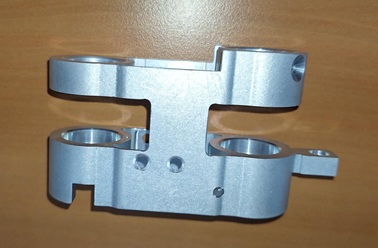Understanding corrosion protection, appearance, and cost-performance trade-offs
Aluminum is widely favored in engineering due to its excellent strength-to-weight ratio and natural oxidation resistance. However, most industrial applications demand additional surface treatments to enhance corrosion resistance, improve appearance, enable conductivity, or support downstream processing like painting or bonding. Below is a summary of the most common aluminum surface finishes, including a technical comparison across corrosion resistance, cost, appearance, conductivity, and color options.
1. Anodizing
An electrochemical process that thickens the natural oxide layer to enhance hardness and corrosion resistance.

Corrosion Resistance: High
Appearance: Satin to matte; dyed colors available (black, red, blue, gold)
Applications: Aerospace components, electronics, consumer products
Limitations: Color consistency can vary by alloy; not suitable for cast aluminum
Color Options: ✔ Limited (dyed metallic tones)
2. Powder Coating
A polymer-based coating applied via electrostatic spray and cured in an oven. Offers a thick, durable surface with excellent visual appeal.

Corrosion Resistance: High
Appearance: Broad range of textures and gloss levels
Applications: Outdoor hardware, automotive trim, furniture
Limitations: Coating thickness can impact dimensional tolerances
Color Options: ✔✔✔ Excellent (full color range including matte, gloss, metallic, textured)
3. Electroplating
A metal layer (e.g., nickel, chrome) applied electrolytically. Typically requires a zincate pretreatment layer for aluminum.

Corrosion Resistance: Medium to High (depends on plating type)
Appearance: Bright metallic finishes
Applications: Decorative trim, electrical connectors, tools
Limitations: Surface prep is critical; limited to metallic colors
Color Options: ✔ Metallic only (chrome, nickel, gold, etc.)
4. Brushed Finish (Mechanical)
A directional abrasion technique that produces a satin linear grain on the metal surface.

Corrosion Resistance: Low (requires secondary protection)
Appearance: Clean, uniform metallic look
Applications: Faceplates, consumer electronics, signage
Limitations: Aesthetic only; no protective function unless combined with coating
Color Options: ✖ None (natural aluminum only)
5. SurTec (Chromate Conversion Coating)
A trivalent chromium-based chemical treatment (e.g., SurTec 650) used for corrosion protection and conductivity.

Corrosion Resistance: Moderate
Appearance: Transparent to iridescent yellow or blue
Applications: Aerospace, electronics, bonding primer
Limitations: Not suitable for aesthetic purposes; minimal wear resistance
Color Options: ✖ Minimal tint only
Technical Comparison Table
| Surface Finish | Corrosion Resistance | Cost | Appearance | Electrical Conductivity | Color Compatibility |
| Anodizing | High | Medium | Medium | Low | ✔ Limited (dyed metallics) |
| Powder Coating | High | Low | High | None | ✔✔✔ Excellent |
| Electroplating | Medium to High | High | High | Medium | ✔ Metallic only |
| Brushed Finish | Low | Low | Medium | N/A | ✖ None |
| SurTec Coating | Moderate | Low | Low | High | ✖ Minimal tint only |
